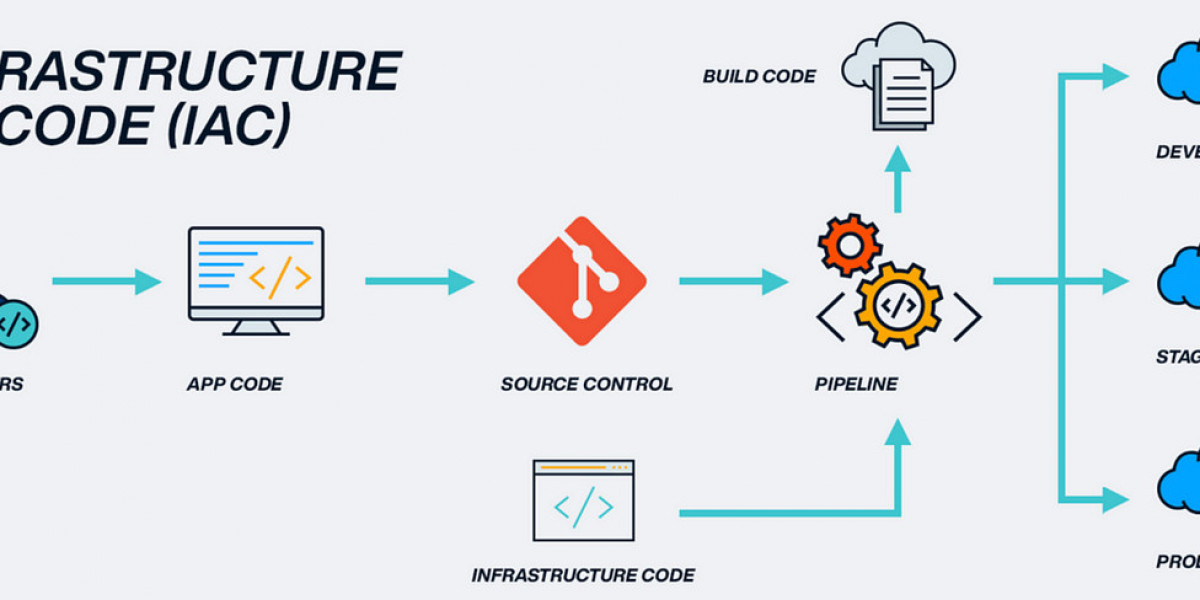As cloud computing and DevOps practices become standard across the tech industry, the demand for automation, consistency, and efficiency has skyrocketed. One of the core enablers of these trends is Infrastructure as Code (IaC)—a methodology that lets teams define, manage, and provision computing infrastructure through code, rather than manual processes. This practice not only accelerates deployment pipelines but also introduces the rigor of software development practices to infrastructure management.
This article dives into the concept of Infrastructure as Code, highlights its benefits, and explores some of the most popular infrastructure as Code Tools developers and operations teams use to manage modern cloud-native environments.
What is Infrastructure as Code (IaC)?
Infrastructure as Code is the process of managing and provisioning computing infrastructure (such as servers, storage, and networks) using configuration files or scripts, rather than interactive configuration tools or manual hardware setups. This approach treats infrastructure in the same way developers treat application code, enabling automation, version control, testing, and reusability.
In practice, IaC involves writing files (typically in JSON, YAML, or domain-specific languages) that describe the desired state of infrastructure. These files can then be deployed using an IaC tool that translates the definitions into real-world resources on platforms like AWS, Azure, or Google Cloud.
Why IaC Matters
There are several reasons why Infrastructure as Code is rapidly gaining adoption:
Speed and Scalability: Automating infrastructure provisioning eliminates the need for manual setup, allowing teams to deploy resources quickly and repeatedly at scale.
Consistency: Code-based configuration reduces the risk of human error and ensures that environments are consistent across development, staging, and production.
Version Control and Auditability: Since infrastructure is defined in code, changes can be tracked, audited, and rolled back using Git or other version control systems.
Disaster Recovery: IaC makes it easier to replicate environments or rebuild from scratch in case of a failure or breach.
Popular Infrastructure as Code Tools
The middle of any effective DevOps strategy involves selecting the right infrastructure as code tools. These tools form the backbone of cloud-native infrastructure management and differ based on use case, platform compatibility, and programming style. Here’s a look at the leading IaC tools in the market:
1. Terraform (by HashiCorp)
One of the most widely used IaC tools, Terraform allows users to define infrastructure in HashiCorp Configuration Language (HCL). It supports multiple cloud providers including AWS, Azure, and GCP, and uses a declarative approach to define resources and dependencies.
Key features:
Provider-agnostic
Strong module ecosystem
Plan and apply workflows for safe changes
2. AWS CloudFormation
CloudFormation is Amazon’s native IaC tool. It lets users describe and provision AWS infrastructure using JSON or YAML templates. It integrates tightly with other AWS services and is ideal for teams deeply invested in the AWS ecosystem.
Key features:
Native AWS support
Rollback and change set features
Drift detection
3. Pulumi
Pulumi brings a unique approach by allowing users to define infrastructure using general-purpose programming languages like Python, TypeScript, Go, and .NET. This appeals to developers who prefer familiar programming constructs over domain-specific languages.
Key features:
Multi-language support
Cloud-agnostic
Native integration with CI/CD tools
4. Ansible (by Red Hat)
Although Ansible is primarily known as a configuration management tool, it also offers infrastructure provisioning capabilities, especially when used with modules for cloud platforms. Ansible uses YAML (via playbooks) and follows a procedural approach.
Key features:
Agentless architecture
Easy-to-read playbooks
Good for both configuration and provisioning
5. Chef and Puppet
These tools are often used in tandem with other provisioning tools and excel in configuration management. They offer more control and customization but tend to have a steeper learning curve compared to other IaC solutions.
Choosing the Right Tool
When evaluating infrastructure as code tools, teams should consider several factors:
Cloud Compatibility: Does the tool support your current and future cloud providers?
Team Expertise: Are your developers comfortable with declarative syntax, or would they prefer using full programming languages?
Complexity of Environment: Some tools handle simple stacks better, while others are better for complex, multi-cloud or hybrid environments.
Ecosystem and Community: Strong community support and available modules can significantly reduce development time.
There’s no universal “best” IaC tool—it’s about selecting what fits your organization’s workflows, experience level, and infrastructure strategy.
Best Practices for Using IaC Tools
Regardless of the specific IaC tool chosen, the following best practices ensure a robust and secure implementation:
Use Version Control: Store all configuration files in Git or another version control system to track and audit changes.
Modularize Code: Break down infrastructure definitions into reusable modules for easier maintenance.
Automate Testing: Integrate unit tests, linting, and policy checks into your CI/CD pipelines.
Encrypt Sensitive Data: Avoid hardcoding secrets in config files; use secret management systems.
Document Everything: Maintain clear documentation to assist onboarding and avoid knowledge silos.
Conclusion
Infrastructure as Code is transforming how teams manage infrastructure, offering speed, reliability, and repeatability. With the right infrastructure as code tools, organizations can build scalable and secure systems while reducing the time and effort needed to manage them. As cloud-native environments continue to evolve, mastering IaC will be essential for every modern DevOps team.
Would you like a version of this article tailored for a specific platform, such as AWS or Azure?






